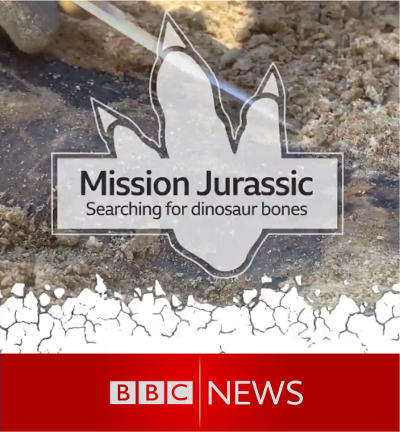We are working with an international team of scientists from three different countries. These include:
Mission Jurassic
Come with us on a journey to 150 million years ago and discover the hidden secrets of 'the Jurassic Mile'.
Buried deep within the rocks of northern Wyoming are fossil remains that might just show us what life was like on Earth during the Jurassic Period. In this exciting new project we are unearthing marine and fossils from the Sundance Formation including Ophthalmosaurus (an ichthyosaur, a dolphin-like marine reptile), but also from the Morrison Formation, the fossils of Sauropods (diplodocids and brachiosaurs), and the theropod Allosaurus (a large predatory dinosaur).
The site offers a unique window into the past due to the layers of rock that were laid down at different points over the Jurassic Period. So far, our team has not only uncovered dinosaur skeletons, but also dinosaur footprints and fossilised plants. With all this information we can start to build a more complete picture of the environment that these Jurassic dinosaurs once lived in.
We are working in partnership with project lead The Children's Museum of Indianapolis and also The Natural History Museum (London), The Naturalis Biodiversity Centre (Leiden) and the SLAC National Accelerator Laboratory to find out more about what it was like at this point in time on planet Earth.
Walking in the footsteps of the dinosaurs
It is unusual to see dinosaur footprints in the same place you find their bones and fossil plants, but the Jurassic Mile is one of the few locations where you can see all these in the same place. By studying footprints we can learn more about how dinosaurs moved and possibly how they interacted with one another.
The footprints are preserved in the Morrison Formation, (a slightly younger geological layer, when compared to the Sundance Formation, from 150-million years ago). These rocks were laid down on a vast floodplain that initially bordered the Sundance Sea, but as the sea retreated, the tidal-flat became a meandering river system. The unique makeup of this Formation means that it is a time capsule that records not only bones and footprints, but also the plant life of the time. Together, this gives us a more complete view of the environment that the dinosaurs once inhabited.
Mission Jurassic
We have been digging the site for the last three years, and over the next 18 years we intend to work with our partners to fully explore and excavate the site. Our aim is to place two vast mounted skeletons of sauropod dinosaurs in The Children's Museum of Indianapolis, adding to their world-class Dinosphere® exhibit. As well as this, we are hopeful that the site's unique geology will present us with previously undiscovered dinosaur species and maybe even some surprises that allow us to use our exciting and extensive imaging facilities at The University of Manchester.




